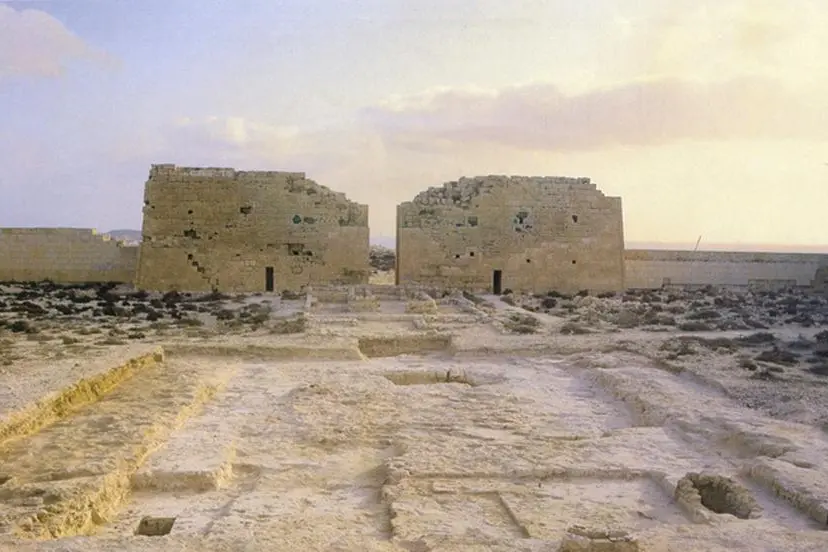Remarkable artifacts and foundation deposits shed new light on the history and culture of ancient Alexandria’s western temple complex.
Archaeological Breakthroughs at Taposiris Magna
The Taposiris Magna Temple, located west of Alexandria, continues to reveal its secrets through groundbreaking discoveries made by the Egyptian-Dominican archaeological mission, led by Dr. Kathleen Martinez in collaboration with the Universidad Nacional Pedro Henríquez Ureña (UNPHU). Among the most significant finds are foundation deposits uncovered beneath the temple’s southern enclosure wall, along with a trove of artifacts that offer a deeper understanding of the late Ptolemaic era.
These discoveries, announced by Dr. Mohamed Ismail Khaled, Secretary-General of the Supreme Council of Antiquities, are hailed as a monumental contribution to our knowledge of this historically rich period. Highlights include a marble statuette of a woman wearing the royal diadem, coins bearing the likeness of Queen Cleopatra VII, and ceremonial items such as a scarab amulet inscribed with “The justice of Ra has arisen.”

Royal Artifacts Spark Debate
The most intriguing find is the small white marble statuette, which Dr. Martinez suggests may represent Queen Cleopatra VII herself. However, many archaeologists dispute this claim, pointing out that the facial features differ from known depictions of Cleopatra VII. “It is more plausible that the statue represents another royal woman or princess from the Ptolemaic dynasty,” said Dr. Khaled.
Accompanying the statuette is a limestone bust of a king adorned with the Nemes headdress, further emphasizing the royal significance of the site. The artifacts also include 337 coins, many featuring Cleopatra VII, and ceremonial pottery vessels, oil lamps, and bronze statues. The collection paints a vivid picture of the temple’s role in religious and royal ceremonies during its time.
Ancient Architecture and Subterranean Mysteries
The mission unearthed evidence of a Greek temple dating back to the 4th century BCE believed to have been destroyed between the 2nd century BCE and the early Roman period. This temple lies near an elaborate network of tunnels stretching from Lake Mariout to the Mediterranean Sea. The tunnels are thought to have served both practical and ceremonial purposes, adding another layer of intrigue to the site.
Additionally, the team uncovered a large necropolis containing 20 catacombs, alongside an underground tomb beneath the ancient lighthouse of Taposiris Magna. This tomb comprises three chambers, one of which held nine white marble busts and other valuable artifacts, underscoring the cultural and historical wealth of the temple complex.
Preliminary underwater excavations in the submerged sections of Taposiris Magna revealed man-made structures, human remains, and an abundance of pottery fragments. These underwater findings further highlight the temple’s significance as a hub of activity during the Ptolemaic period.

Cultural and Historical Significance
The artifacts and structures unearthed at Taposiris Magna provide invaluable insights into the architectural, cultural, and ceremonial practices of the late Ptolemaic era. The ceramic shards discovered date the temple’s construction to the 1st century BCE, while items such as the scarab amulet and bronze ring dedicated to the goddess Hathor emphasize the site’s religious importance.
The Ministry of Tourism and Antiquities commended the mission’s achievements, describing the discoveries as pivotal for understanding the complex history of the late Ptolemaic period. As excavation efforts continue, the team hopes to uncover further connections between Taposiris Magna and the reign of Queen Cleopatra VII, whose life and legacy remain a source of fascination.
The discoveries at Taposiris Magna provide a profound glimpse into the late Ptolemaic era, unveiling royal connections, cultural practices, and architectural marvels. As excavation efforts continue, these findings not only enrich our understanding of Cleopatra’s time but also preserve the legacy of ancient Alexandria, inspiring future research and historical exploration.
It opens new chapters in the story of ancient Alexandria, offering a glimpse into the lives, beliefs, and traditions of the late Ptolemaic world.

